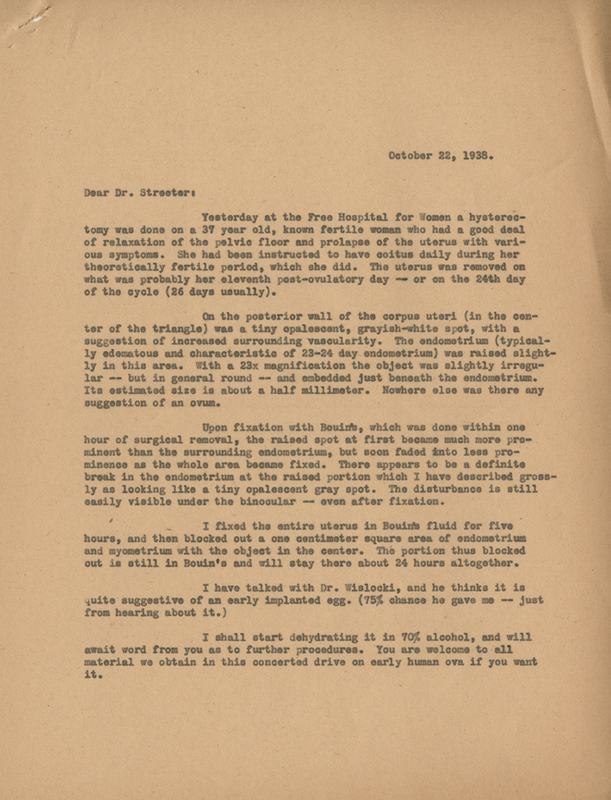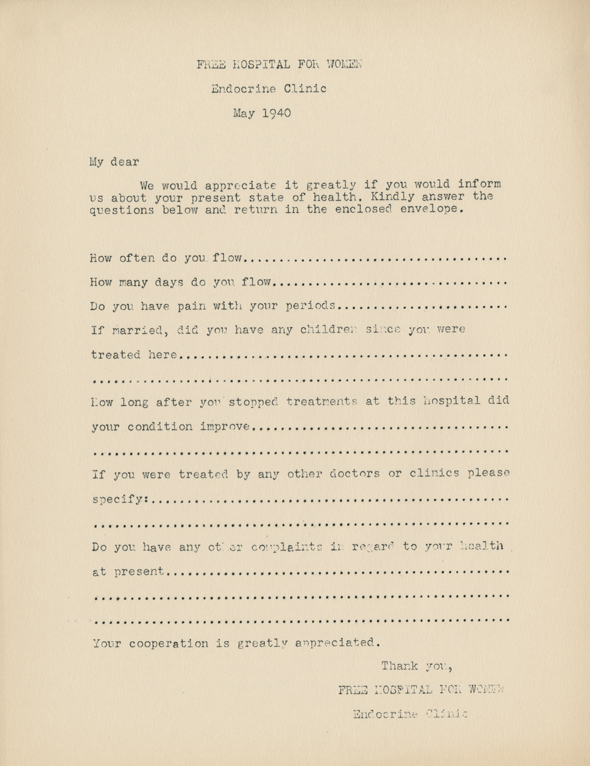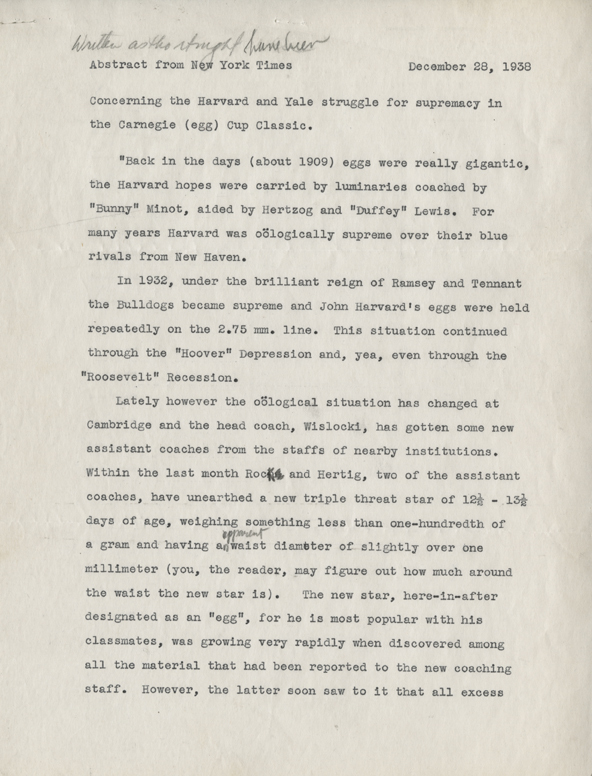Race for the Early Egg
With funding from the Carnegie Institution, Rock worked with Arthur T. Hertig and Eleanor Colby Adams to identify 34 fertilized ova that document the first 17 days after conception. Hertig had completed a fellowship at the Carnegie Institution in 1934, and corresponded regularly with the Institution’s director, George Streeter. In October of 1938, Hertig was at last able to report the discovery of something that “is quite suggestive of an early implanted egg.” Streeter agreed that Hertig should send it to the Carnegie for examination. Hertig concluded,
If this proves to be nothing it won’t be from lack of staff’s and patient’s [sic] cooperation. As Dr. Rock philosophically remarked, “If this thing is not ‘it’ then some other one in the future will be.”
But the specimen was “it.” Carnegie egg number 7699 was the first ovum they discovered and, at 11 and one-half days, the youngest found to that time.
Each participant that entered into the Rock-Hertig study was asked to fill out a survey form and monitor her cycle, as well as record dates of coitus. This information was then used during the ‘egg hunting’ process after surgery.
This excerpt from a 1950 <i>Life Magazine</i> article about the human embryo contains some Rock-Hertig embryo images.




